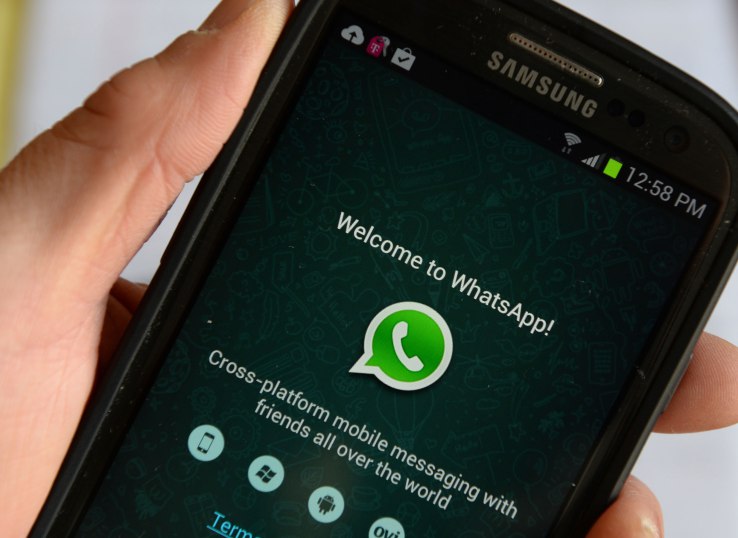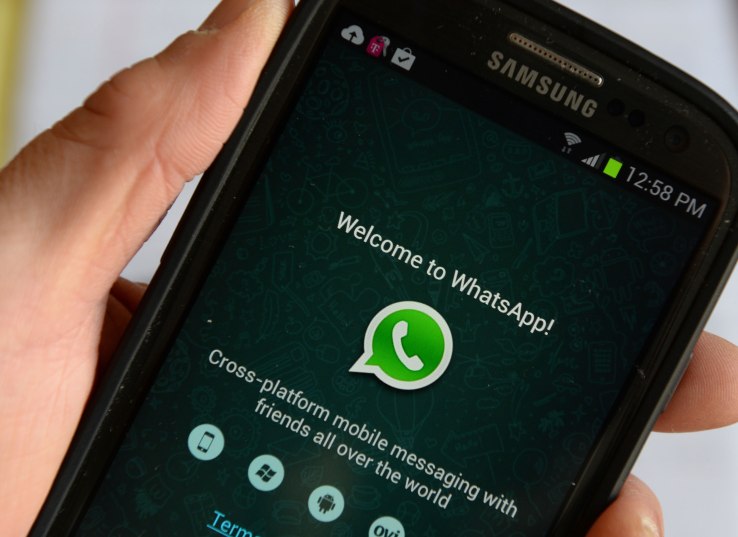

WhatsApp will finally take a step to becoming a platform after the Facebook-owned company revealed it will begin to integrate businesses services into its app before the end of this year.
The company first announced plans to connect its userbase — which stands at more than one billion — with businesses back in January, and it today it updated its terms of service in preparation for testing with selected users “in the months ahead.”
What kind of dialogue will WhatsApp facilitate between users and businesses?
The aim is to keep things useful, such as flight notifications, receipts or delivery tracking, although marketing messages are mentioned in the newest version of the company’s T&Cs:
We will explore ways for you and businesses to communicate with each other using WhatsApp, such as through order, transaction, and appointment information, delivery and shipping notifications, product and service updates, and marketing. For example, you may receive flight status information for upcoming travel, a receipt for something you purchased, or a notification when a delivery will be made. Messages you may receive containing marketing could include an offer for something that might interest you. We do not want you to have a spammy experience; as with all of your messages, you can manage these communications, and we will honor the choices you make.
The move is a very notable one given that WhatsApp has always taken a very aggressive ‘no spam’ approach to its business. “Marketing” messages and “an offer for something that might interest you” could fall into the category of spam if not done right, context is key here.
Back in 2012, CEO and co-founder Jan Koum threw shade a number of rival messaging companies which he claimed were “selling” ads to their users:
No one wakes up excited to see more advertising, no one goes to sleep thinking about the ads they’ll see tomorrow. We know people go to sleep excited about who they chatted with that day (and disappointed about who they didn’t). We want WhatsApp to be the product that keeps you awake… and that you reach for in the morning. No one jumps up from a nap and runs to see an advertisement.
Advertising isn’t just the disruption of aesthetics, the insults to your intelligence and the interruption of your train of thought. At every company that sells ads, a significant portion of their engineering team spends their day tuning data mining, writing better code to collect all your personal data, upgrading the servers that hold all the data and making sure it’s all being logged and collated and sliced and packaged and shipped out… And at the end of the day the result of it all is a slightly different advertising banner in your browser or on your mobile screen.
The irony here is that many of those in Koum’s firing line — WeChat, Line, and Kakao — weren’t pushing ads. They opted to make money by connecting businesses with users via “official accounts” that companies could pay to rent and promote. As we wrote before, the ability to reach users directly is a potentially a very powerful new tool — and it remains opt-in for uses. Actual banner ads are few and far between in the messaging space because they ruin the user experience and look alien inside chat, which is a highly personal and curated space.
It isn’t exactly clear whether WhatsApp’s ‘business communication’ push will be like official accounts, the company didn’t go into detail on the format. What it did say, however, is that it will begin sharing data, and in particular, users’ phone numbers, with Facebook — the company that acquired WhatsApp for a fee that ultimately rose to $22 million — which is a key way it hopes to make messages relevant and not spammy.
That’s quite a big admission, although WhatsApp users will be able to opt out of sharing their information with Facebook.
For those who go with the default, this is how your data will be put to work:
As part of the Facebook family of companies, WhatsApp receives information from, and shares information with, this family of companies. We may use the information we receive from them, and they may use the information we share with them, to help operate, provide, improve, understand, customize, support, and market our Services and their offerings. This includes helping improve infrastructure and delivery systems, understanding how our Services or theirs are used, securing systems, and fighting spam, abuse, or infringement activities. Facebook and the other companies in the Facebook family also may use information from us to improve your experiences within their services such as making product suggestions (for example, of friends or connections, or of interesting content) and showing relevant offers and ads. However, your WhatsApp messages will not be shared onto Facebook for others to see. In fact, Facebook will not use your WhatsApp messages for any purpose other than to assist us in operating and providing our Services.
These are major concessions for WhatsApp, but they are fairly inevitable. Facebook spent a lot of money acquiring the company, and while I believe that it wants to build rival chat app Messenger into the more feature-rich ‘WeChat-style’ chat/mobile portal service, it has a duty to monetize WhatsApp. Indeed, Mark Zuckerberg himself once said that monetization begins when a service reaches one billion users, so here we are.
There is a tendency to view this plan as negative, particularly given that other WhatsApp updates have added useful features to the service — such as encrypted communication and voice calls. On the positive side, the WhatsApp service will retain its focus on simplicity and usability, so don’t expect there to be many distractions from the existing messaging interface you see now.
But, of course, we don’t know for sure just yet.
WhatsApp has been fairly vague with its plans for now, so we’ll have to wait until it begins field testing business communications to learn more. Other apps have pioneered the business communications model for many years, but a colossal base of over one billion monthly users means this move promises to be the most impactful feature launch seen in the messaging space to date.
Featured Image: STAN HONDA/Getty Images

